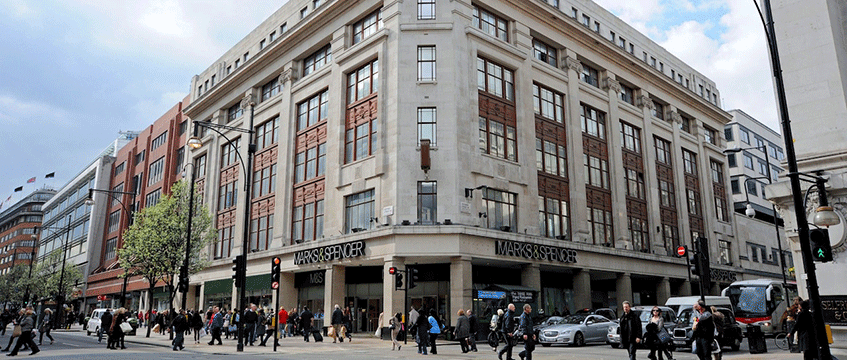On 20 July 2023, the secretary of state issued his long-awaited decision in relation to Marks & Spencer’s proposals for a new flagship store on Oxford Street, W1. The decision has attracted industry attention due to its interaction with developing policies relating to redevelopment vs refurbishment, carbon impact (net zero, embodied and whole life cycle), and potential implications on similar proposals – M&S favouring a demolition (of the existing Orchard House) and rebuild approach over refurbishment, on the basis that a refurbishment option was not deliverable or viable.
Secretary of state’s decision
The secretary of state refused the application, contrary to his inspector David Nicholson’s recommendation and Westminster City Council’s resolution prior to the application being “called-in”, finding overall conflict with the development plan and that material considerations indicated that permission should not be granted.
The key distinction between the inspector’s recommendation and the secretary of state’s decision was their conclusion as to the extent of overall compliance with the development plan (Westminster’s City Plan and the London Plan):
(1) the inspector placed considerable weight on the extent to which the proposal would comply with the development plan taken as a whole – noting that refusal would be against various recently adopted development plan polices aimed at improving Oxford Street and other key areas;
(2) the secretary of state on the other hand found that because the proposal conflicted with heritage and design policies, which were deemed to be central to the decision, this resulted in the proposal conflicting with the development plan as a whole.
These starting points set the decision makers on different paths; section 38(6) of the Planning and Compulsory Purchase Act 2004 requiring that, where regard is to be had to the development plan, that determination must be made in accordance with the plan unless material consideration indicates otherwise. Both the inspector and secretary of state gave primacy to the development plan and concluded that material considerations did not indicate that a decision should be made otherwise than in accordance with the plan. However, the starting point of overall compliance vs non-compliance with the plan resulted in conflicting final recommendations.
The key policies cited by the secretary of state in his finding of non-compliance with the development plan as a whole were:
1. Design Polices D3 (London Plan) and 38 (Westminster City Plan) – concluding that a conflict arose due to the impact on heritage assets which he afforded great weight (both design policies requiring that proposals conserve and respond to existing heritage assets), and that the proposals were not the right approach for this particular location; and
2. Heritage Policies (HC1 London Plan) and 39 (Westminster City Plan) – concluding that a partial conflict arose due to proposals failing to conserve the heritage assets in a manner appropriate to their significance (noting particularly the harm to the setting of Selfridges and the CAs, and the total loss of the non-designated Orchard House).
The secretary of state also considered that the inspector had overstated the scale of the harm to the vitality and viability of Oxford Street and the West End without the scheme. The inspector attributing substantial weight to this issue, whereas the secretary of state found that wider harm to the West End would not be caused, and that the harm to Oxford Street would be limited.
The direction of travel
While heritage grounds are front and centre of this decision, environmental and sustainability issues were material considerations, and the decision provides some steer as to the current direction of travel.
The secretary of state agreed with his inspector that there should generally be a strong presumption in favour of repurposing and reusing buildings, which he confirmed reflects paragraph 152 of the NPPF. He considered that where the buildings in question are structurally sound and are in a location with the highest accessibility levels, that a strong reason would be needed to justify demolition and rebuilding.
The secretary of state was critical of M&S’s justification for demolition, stating that the contemporaneous evidence said little about the consideration of refurbishment and referred mostly to M&S’s specification and standards. He also noted that there was little evidence to suggest the principle of refurbishment had been discussed with Westminster council and the Greater London Authority, and that the viability evidence presented was not compelling.
The secretary of state was clear that applicants proposing demolition and rebuild will need to show that options for retaining or retrofitting the building have been fully explored, and that there is compelling justification for demolition.
Linked to such justification, commentators have criticised the secretary of state’s failure to properly grapple with sustainability credentials of the new M&S building. While M&S’s whole-life carbon assessment showed lesser long-term carbon impact than refurbishment of the existing building, the decision concludes that the scheme would impede the UK’s transition to a zero-carbon economy contrary to paragraph 152 of the NPPF due to the substantial amount of carbon which would go into construction of the new building and the failure to explore alternatives to demolition.
While the secretary of state notes that climate change policy in this area is continuing to develop, the decision makes for challenging and uncertain reading for developers seeking to demolish to provide sustainable long-term carbon-efficient buildings.
The decision also stresses that it turns on its own very specific facts, including the relevant development plan policy matrix, the inspector’s report and evidence which was before the inquiry, which are all unlikely to be replicated in other cases. Notwithstanding this, parallels to this decision are likely to be drawn in relation to similar applications.
Chris Todman is a senior associate at Town Legal LLP









